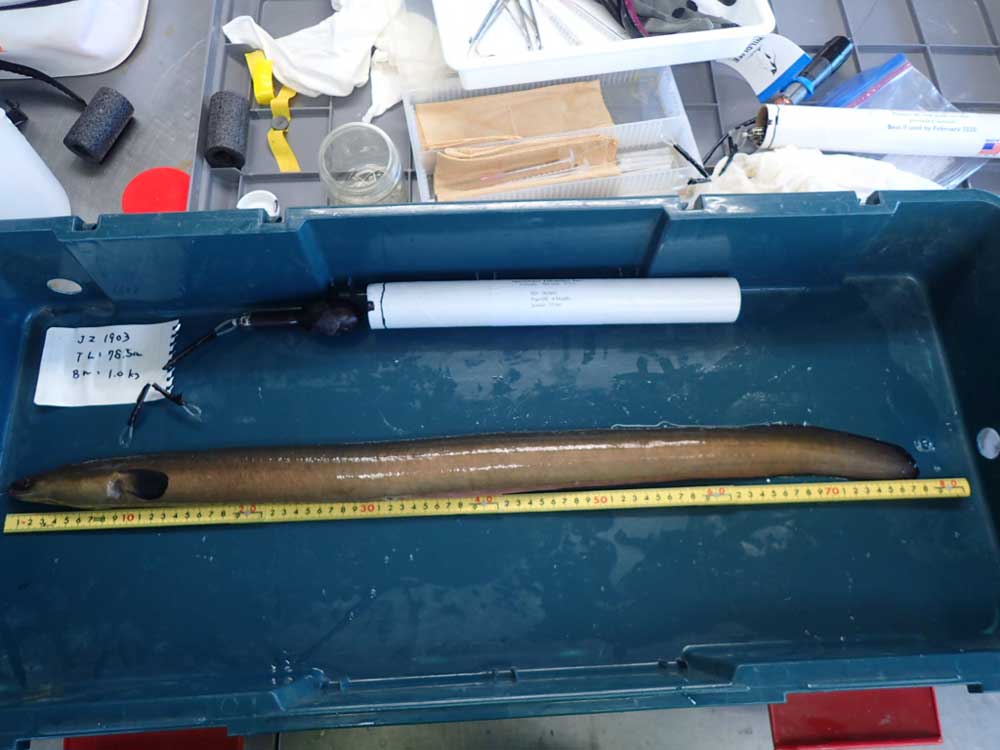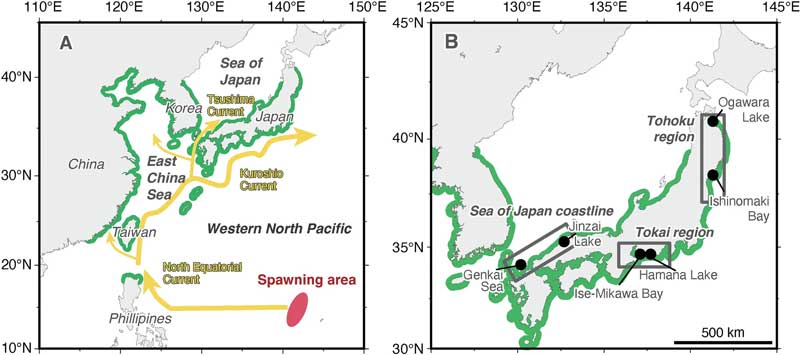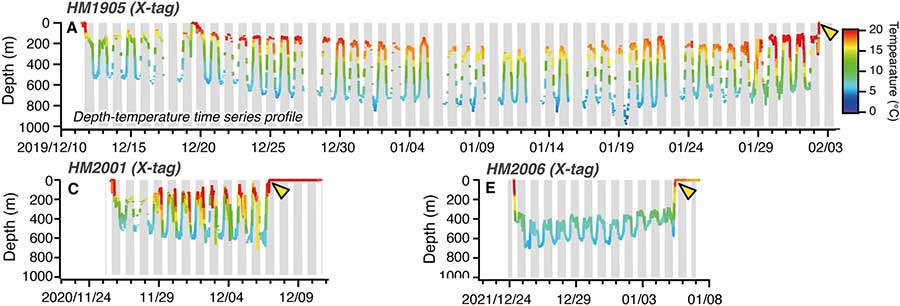← Back
Tracking Japanese eels with Argos tags

Japanese eels’ populations are declining, while their life cycle is not well-known. Part of the questions are similar to those asked for the European eels, but geography, the current and the species itself have their specificities. Argos helps in understanding the eels’ migration from Japan to their spawning grounds in the Pacific Ocean.
Japanese eels (Anguilla japonica) are found widely in East Asia, both in freshwaters and on the coasts – including Japanese. They are heavily fished, and their population has declined in recent decades, much as the other Northern Hemisphere species.
Also as those, they are supposed to have a single spawning ground, in their case situated in the waters to the west of the Mariana Ridge (for some European eels’ tracking examples see Tracking eels to the Sargasso Sea, How many Mediterranean migrating eels are eaten on their way to the Atlantic?, Eels’ travel in the Atlantic tracked by Argos satellite telemetry, Eels’ travel in the Mediterranean tracked thanks to Argos & goniometer).
However, due to their smaller size, no long-term tracking of Japanese eels has been done. Thus, their migratory behavior from their growth habitats is poorly understood.
More info about animal tracking with Argos

Twenty-three adult eels at their migratory stage (silver eels) were captured on the coasts of three regions of Japan (Tokai region, Sea of Japan coastline, and Tohoku region) from October 2019 to February 2020 and equipped using pop-up satellite archival tags.
Fifteen tags transmitted data, though no tracking lasted for more than two months. At least one successfully tracked eels seemed to be eaten, probably by an endothermic predator given the temperature/depth profile and the known sea temperature. Another might, with less certitude (tag resurfaced at the same point it dived).
The path followed by the three populations were different, although compatible with the general direction of the spawning ground. The eels released in the Tokai region followed the ocean current, while the ones from the Sea of Japan and Tohoku migrated against the ocean current, respectively westwards and southwards.

In the Tokai region, individuals equipped with depth-recording tags exhibited a pattern of diel vertical migration, diving to depths of 500–800 m during the day and ascending to 100–500 m at night. The behavior was noticeably different in the Sea of Japan, where an eel showed repeated vertical movements, but not following a diel vertical migration pattern, including with respect to the maximum depths reached (150 m).
This is probably linked to the bathymetry of the Sea of Japan, which has a broader continental shelf. The eels seemed to avoid water temperatures below 5°C, with the diel-vertical migrating ones staying just above this isotherm during days.
Thus the regions influences a number of Japanese eels’ behaviors, including the route towards the spawning grounds. However, the full route had not yet been tracked, and further studies will be needed to manage to complete the whole travel. Further tracking from different regions would also be useful, so as to strengthen the knowledge brought by this study. Predation along the migration is also a topic which should be investigated.
Reference
Abe, T.K., Galang, I., Daryani, A. et al. Regional differences in oceanic migratory behavior of Japanese silver eel in waters with different vertical temperature gradients. Anim Biotelemetry 11, 27 (2023). https://doi.org/10.1186/s40317-023-00338-x

